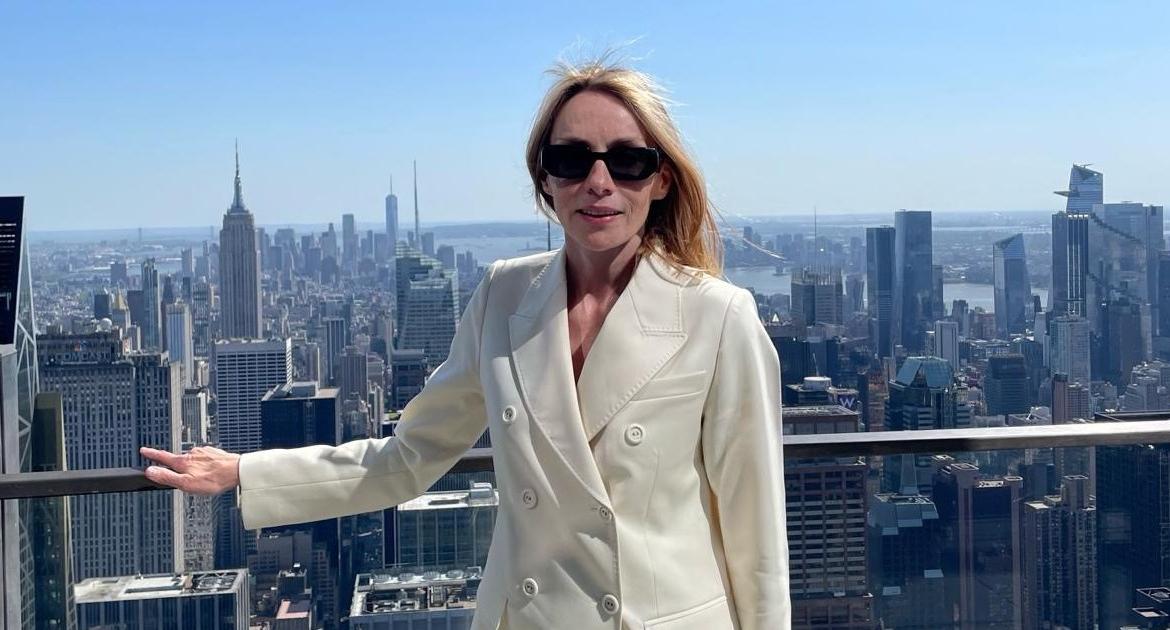1 of 17
|
Hannah Le Leu - Through thick and thin.
One hundred photographers have contributed wildlife photos to the Vital Impacts initiative.
The images will be sold to raise funds and awareness among grassroots conservation organizations.
This photo, by Hannah Le Leu, shows a baby green sea turtle surfacing for air near Heron Island, Australia, under a sky full of predatory birds.
Credit: Hannah Le Leu
2 of 17
| Ami Vitale - Kamara and Kilifi. Vital Impacts was founded by visual journalist Eileen Mignoni and Ami Vitale, who was a conflict photographer for a decade before becoming a wildlife photographer. This image from Vitale shows Kilifi, an 18-month-old rhino, and his keeper, Kamara. Kilifi was raised in the Lewa Wildlife Conservancy in Kenya. Credit: Ami Vitale
3 of 17
| Ami Vitale - “Goodbye Sudan”. Here, Joseph Wachira comforts Sudan, the last male northern white rhino on the planet, moments before his death in March 2018 at the Ol Pejeta Conservancy in northern Kenya. Now, two females are all that remains of the species. "I think this image is so beautiful and heartbreaking," Vitale said. "It represents the best and the worst of humanity. I think that people like JoJo (Joseph Wachira) in this photo represent the best of humanity, and that we all have it inside, and that it is simply about reimagining our world and dreaming and believing. that we can change the direction we are taking. ”Credit: Ami Vitale
4 of 17
| Jody MacDonald - Rajan, the swimming elephant. Rajan, a 66-year-old Asian elephant who swims in the Indian Ocean. According to photographer Jody MacDonald, Rajan was brought to the Andaman Islands for logging use in the 1950s. After logging was banned, Rajan continued to live there, "sunbathing on the beach, swimming in the ocean and foraging for food in the forest ", until his death in 2016. Credit: Jody MacDonald
5 of 17
| Andrew Suryono - An orangutan's fight for survival. Orangutans are known to mimic human behavior and this baby takes shelter from the rain under a leaf. The orangutan is the only great ape in Asia and is found mainly in Borneo and Sumatra in Indonesia. Borneo's orangutan populations have declined by more than 50% in the past 60 years, and the species has lost more than half of its habitat in the past 20 years, according to the WWF. Credit: Andrew Suryono
6 of 17
| Cristina Mittermeier - Crabeater seals. Crabeater seals relaxing in the Antarctic, in an image captured by conservation photography pioneer Cristina Mittermeier. Through his SeaLegacy organization, Mittermeier works to support new marine protected areas on the Antarctic Peninsula. Credit: Cristina Mittermeier
7 of 17
| Babak Tafreshi - Desert by moonlight. This image shows Death Valley National Park in California. "Being an International Dark Sky Park, Death Valley's nocturnal environment is protected from light pollution, making it one of the favorite destinations for stargazing, as it is only a few hours away. drive from Los Angeles or Las Vegas, "explains photographer Babak Tafreshi to Vital Impacts. Credit: Babak Tafreshi
8 of 17
|
Stephen Wilkes - Serengeti Day to Night.
For his project "Day to Night", Stephen Wilkes creates images of landscapes photographed from a fixed camera angle for up to 30 hours.
Mixing these images into a single photograph can take months.
In the picture, the Serengeti National Park, Tanzania.
Credit: Stephen Wilkes
9 of 17
|
Anand Varma - Anna's hummingbird drinking nectar.
This photograph by Anand Varma shows Anna's hummingbird drinking artificial nectar through a glass container, using its forked tongue.
Credit: Anand Varma
10 of 17
| Beth Moon - Shebehon Forest. Dragon blood trees in the Shebehon Forest, Socotra Island, Yemen. "These trees, which were once part of a vast forest, are now classified as endangered," explains photographer Beth Moon to Vital Impacts. "Recent years have shown a worrying decline due to overgrazing by goats, harvesting by islanders and insufficient cloud cover needed for young trees." Credit: Beth Moon
11 of 17
| Jane Goodall - Self Portrait. Here, the celebrated primatologist Jane Goodall appears with a telescope, searching for chimpanzees in the forest of Gombe National Park, Tanzania. Goodall took this photo around 1962, using a camera attached to a tree branch. "I had to find a place where there was just a tree to balance the camera," Goodall told Vital Impacts. "I had to mount the tripod and move it around until I had the tripod and the imaginary image of me well framed ... I was very proud of myself. I love that photo." Credit: Jane Goodall
12 of 17
|
Jennifer Hayes - Seeking Shelter.
A baby harp seal takes refuge from the winds that whip through the sea ice that covers the Gulf of St. Lawrence, Canada, photographed by Jennifer Hayes.
Credit: Jennifer Hayes
13 of 17
|
Steve Winter - Pepe's bath with the jaguars.
Two jaguars rescued from the illegal pet trade in southern Cancun, Mexico, in 2008. According to photographer Steve Winter, the animals had been kept as pets and then simply let loose when they were no longer wanted.
These two animals were rescued and lived out their days in a sanctuary.
Winter and his wife Sharon Guynup have discovered the illegal big cat trade for decades.
Credit: Steve Winter
14 of 17
| Matthieu Paley - Ice Rider Siberia. A view from above of Lake Baikal, the largest freshwater lake in the world. "During winter, the ice is up to 1.5 meters thick, allowing trucks and animals to cross safely," explains photographer Matthieu Paley to Vital Impacts. "The white lines are cracks in the ice, and when temperatures change, they make loud shuddering noises, reinforcing the eerie atmosphere." Credit: Matthieu Paley
15 of 17
|
Joel Sartore - Gray-tailed Mustak Monkeys.
These monkeys are photographed at the wildlife rehabilitation center of the NGO Animals World in Libreville, Gabon.
This photograph is part of Photo Ark, a documentary project founded by photographer Joel Sartore to save species and habitats.
Credit: Joel Sartore
16 of 17
|
Michael Yamashita - Sandstone pillars surrounded by mist.
This image of sandstone pillars in Wulingyuan, China, was captured by Michael Yamashita.
Credit: Michael Yamashita
17 of 17
| Nick Brandt - Harriet and People in the Mist, Zimbabwe, 2020. Harriet, a giant eagle owl, was rescued as a chick and has lived in Zimbabwe's Kuimba Shiri Bird Sanctuary for 35 years, according to photographer Nick Brandt. The fog was created by fog machines on site, as a "unifying visual". "More and more we find ourselves in a kind of limbo, a fading natural world," Brandt told Vital Impacts. "The fog is also an echo of the suffocating smoke from forest fires, intensified by climate change, that devastate much of the planet." Credit: Nick Brandt
(CNN) -
The last moments before the death of the last northern white rhino, a 66-year-old elephant swimming in the ocean and renowned primatologist Jane Goodall searching for chimpanzees in Tanzania in the early 1960s; all of them are moments captured in a collection of stunning photographs that have been donated to raise funds for conservation projects.
The works of 100 photographers from around the world will be sold until the end of the year by Vital Impacts, a non-profit organization that provides financial support to community-oriented conservation organizations and publicizes the work of photographers who publicize their efforts. .
The participants are a group of nature photographers, such as Paul Nicklen, Ami Vitale, Jimmy Chin, Chris Burkard, Nick Brandt, Beth Moon, Stephen Wilkes and Goodall herself.
"Every image has a very deep story behind it," said Vitale, award-winning photographer and co-founder of Vital Impacts.
"I worked very hard on the selection to make sure these photographers were diverse, but what they all share is their commitment to the planet. They use their art to help conservation."
An inspiration to the world
The photograph of Goodall, sitting with a telescope on a high peak in Gombe, Tanzania, was taken around 1962 with a camera attached to a tree branch.
"I was very proud of myself. I love that photo," Goodall said in a recorded message for Vital Impacts.
All proceeds from her self-portrait will go to support her Roots & Shoots program, which educates young people and empowers them to care for the world.
Self-portrait of Jane Goodall, from the early 1960s, in Tanzania.
Credit: Jane Goodall
"It's awesome work," said Vitale, who only learned that Goodall was a photographer after contacting her to support the show.
"She has been a great inspiration to the world. This woman has had such a great impact for the betterment of the planet."
Vital Impacts has tried to make print sales carbon neutral, planting trees for every print made.
60% of the proceeds from the sale will be shared among four groups dedicated to protecting wildlife or habitat: The Big Life Foundation, the Great Plains Foundation's Ranger Project, the Jane Goodall Institute's Roots & Shoots program, and SeaLegacy.
The remaining 40% will go to photographers to help them continue their work.
advertising
We are all on the same raft
Vitale was a conflict photographer for a decade before becoming a wildlife photographer.
He hopes that people will be "inspired by all this work" and that the photographs will make people "fall in love" with our "magnificent planet."
"The planet is our raft of shared life and we have put some holes in it, but it is not too late," added Vitale.
"We can all do small acts that can have profound impacts. That is why I called it 'Vital Impacts', because I think we are often so disconnected that we don't realize how interconnected we are. Everything we do has an impact on others and shapes this world. "
One of his photographs in the print sale, "Goodbye Sudan", shows Sudan, the last male northern white rhino, being comforted by one of his keepers, Joseph Wachira, at the Ol Pejeta Conservancy in northern Kenya moments before. of his death in March 2018. Now, two females are all that remains of this species.
Ami Vitale's "Goodbye Sudan" shows the moments leading up to the death of the last male northern white rhino in 2018. Credit: Ami Vitale
"It's such an important story to me because it made me realize that watching these animals go extinct is actually like watching our own demise in slow motion, knowing it's going to impact humanity," Vitale said.
"It is so deeply intertwined. That is what led me down this path and now I really try to find these stories that show us a way forward, where people are learning to coexist and protect the wildlife and habitats we all share." .
Wildlife photography




/cloudfront-eu-central-1.images.arcpublishing.com/prisa/HXTIXWY4CZBOVEEG4LB5KEE354.jpg)


/cloudfront-eu-central-1.images.arcpublishing.com/prisa/J332KLBPPBZ5VFKVWFAKX6T57I.jpg)
/cloudfront-eu-central-1.images.arcpublishing.com/prisa/SQN2VL7UNZHZHOC7GDJ4VNMGBM.JPG)
